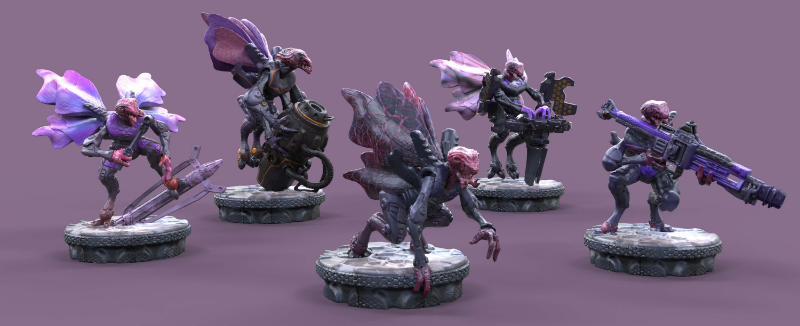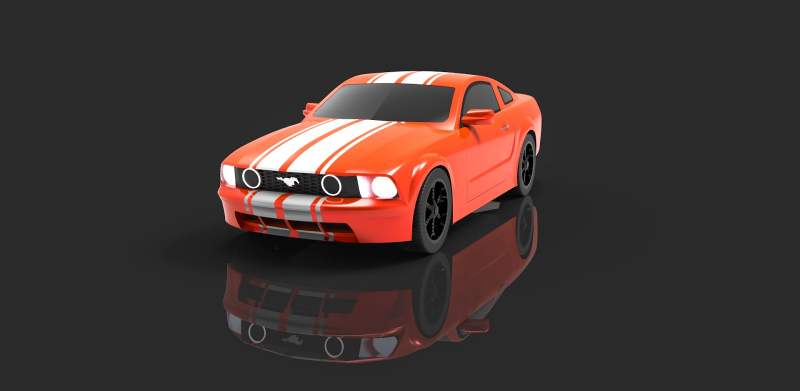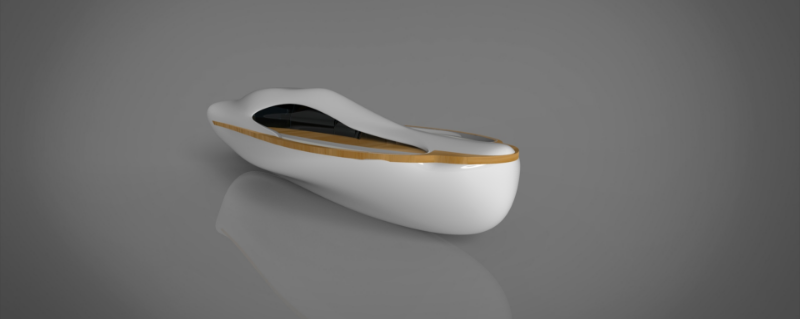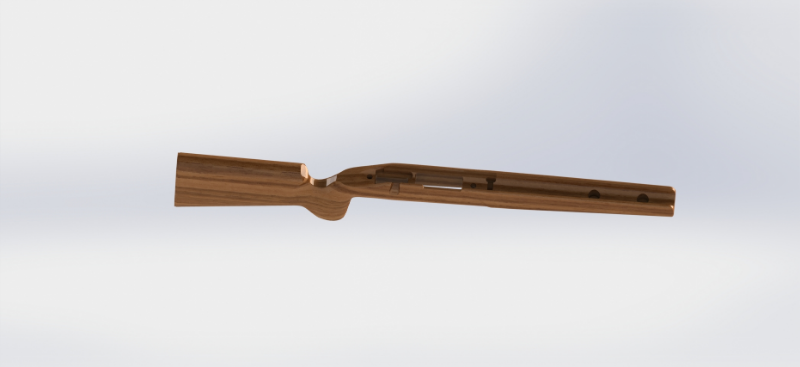Since the inception of 3D modeling, its great visual relevance has made it what it is today. With or without past knowledge or foresight of how the technique works, the flashy nature of 3D modeling catches people’s attention due to its artistic quality. 3D modeling is spreading across several industries, including video publishing, video games, geology, and architecture.
3D modeling in its most straightforward meaning is the representation of an object in three dimensions with specialized software. This article is geared towards answering questions about 3D modeling techniques. We have discussed the common different 3D modeling techniques that 3D artists need to consider when working on their 3D CAD services project.
Key Terms
In 3D modeling or design, there are certain must know 3D modeling terms that you should know and understand in order to be able to communicate with clients and other designers successfully.
Mesh: A collection of polygons and a shape in the 3D field.
Vertex: The corner of a shape, and a point in space where edges meet.
Pole: A vertex with the edge coming out of it.
Polygon: A face of a 3D shape that connects different vertices via edges.
Edge: A connection between two vertices.
Triangle: A polygon with precisely three vertices.
Image-Based Modeling
This 3D modeling technique is also known as three-dimension modeling from images. The technique involves using two-dimensional images to create three-dimensional models. Many times, these models contain a shape that is geometrically formed and a texture map defining the shape.

This modeling technique is practically useful for digital entertainment, visual reality, and robotics. Two thoughts exist on image-based modeling. The first thought uses a pure image with binoculars while the other group employs a range sensor for shape modeling. Both thoughts are a technique developed to automatically configure a simulated three-dimensional model by observing actual object measurements derived from images.
This technique of 3D modeling is frequently used in situations where the modeler or 3D artist has limited time to successfully execute the 3D project, and it’s common in the film and entertainment industries.
Primitive Modeling
The evolution of modeling can be traced far back to primitive shapes. They’re the building blocks of 3D modeling, so it’s impossible to leave them out of the book. The most common 3D primitives are cones, pyramids, spheres, cylinders, and cubes.
The same primitives that are helpful when sketching objects also help to create 3D models of those objects. For example, a teapot is a primitive listed in the 3D Studio Max software.
3ds Max and Maya are the best software suites 3D designers can use for primitive modeling because they offer the best workable tools for changing images and shapes. Primitive modeling is used to develop 3D images of buildings, objects that aren’t movable, and furniture. They are often used in the construction industry.
Polygonal Modeling
Have you ever thought of turning a cube into a room or a plane into a simple bottle of wine? If your answer is “yes,” then consider yourself to have employed the polygonal 3D modeling technique. Hexagons, triangles, pentagons, and quadrilaterals are all examples of a polygon.
Polygonal modeling is an advanced approach used to model an object by depicting its surfaces using polygons. It’s often used in the creation of 3D models for video games and movies. It’s a technique of choice for real-time computer graphics, and it gives an object a realistic appearance.
As it’s well known, when three or more points of the same rank are connected by an edge, they form a polygon. Such a connection can recreate an object of any form or shape. However, it’s imperative that a freelance 3D modeler decides the number of polygons needed for a particular 3D image.
It’s also advisable that an adequate number of polygons be used, especially in video game production, because the 3D modeler needs to calculate all polygons that are more than three points and ensure all the points are coplanar. This can only be achieved by converting the polygons into a triangular shape.
These are standards in the gaming industry so that the game can run smoothly and be easily downloaded. For movies, on the other hand, it’s feasible to use thousands of polygons.
Digital Sculpting Modeling
This modeling technique is one of the prominent modeling techniques and is often called 3D sculpting. More like sculpting with clay, digital sculpting is the application of software that provides kits to grab, push, pull, smooth, or otherwise manipulate any digital object as if it were made of tangible material.
The process involves different layers. Digital sculpting is a kind of disruptive system and has pivoted the process of 3D modeling to a recognizable height. The technique is a unique technological advancement that has transformed thinking processes and the standards of achieving specific designs.

Freelance 3D sculpting services see this technique as one of the latest trends in the market, and it’s mainly used for organic modeling (irregular, curved surfaces like those found in nature) rather than hard surface modeling (sharp edges and flat surfaces usually found in manufactured objects). Meshes that are impossible and hard to create using traditional 3D modeling techniques are oftentimes introduced by sculpting. This allows the design to become hyper-realistic.
The use of highly refined 3D modeling software is required to develop a model with this technique. Most industries find this technique enticing and have adopted it into their marketing strategies and product development processes.
With this modeling technique, modelers or artists can effectively carry out the process of character sculpting and create much faster with higher proficiency. Digital modeling is a 3D technique used mainly in the technology and automobile industries.
Surface Modeling
Surface modeling is a computer-based application capable of mapping information for solid-appearing objects. One of the reasons why this modeling technique is imperative is because with it, it’s feasible for users to view an object or sample with solid surfaces at specific angles.
This technique provides mathematical data usually in the form of computer-aided designs. The surface modeling technique is well-known being used by architectural rendering services and designs.
This modeling technique is considered a more difficult technique for visibly displaying samples than wireframe modeling but offers more flexibility to the designer. 3D surface modeling can work simultaneously with SmartSEM in the live mode, for real-time 3D imaging. It can also work in standalone mode for creating archived project files and organic molds.
A 3D spline can be easily created using a 2D spline feature, B-spline, and Beizer mathematical techniques, which are the distinct techniques that surface modeling uses to completely control curves and shapes with a more functional display compared to other modeling techniques.
Unlike solid models, one of the unique qualities of surface models is that they cannot be sliced open when using surface modeling. Modelers can build one surface at a time in order to control the exact direction and contour of any surface of the model.

Surface modeling appears to be tedious because the modeler concentrates her time, effort, and storage space on one side instead of different surfaces at a time. To easily make the desired change, surface modeling can be adopted to replace or delete several surfaces of the model, although this may seem challenging.
In addition, the model helps remove hidden lines and increase realism. This technique is used in different industries, including the film, game, and entertainment industries.
Subdivision/Box Modeling
Subdivision modeling is also one of the common 3D digital techniques used by modelers in the game and movie industries. This digital technique requires the creation of a 3D model via polygonal modeling, and then its conversion into the subdivision model.
In 3D computer graphics, subdivision modeling is a method in which a smooth surface is represented through a course specification. This modeling technique is used to create clean models with scalable details that are higher quality when they are rendered.
This modeling technique is a result of the combination of NURBS and polygonal modeling. It has built notoriety naturally due to several aspects of how digital art is typically rendered, and it’s used to some extent in almost all industries that use 3D modeling because it creates high-resolution models.
When using this method, start with a specific polygonal mesh. A refinement scheme is then applied to the mesh. The process takes the mesh and subdivides it, by way of creating new surfaces and vertices. This process produces a finer mesh containing more polygons than the original. The resulting mesh can pass through the same shape refinement scheme repetitively until the mesh contains enough polygons to present the concept correctly.
This process of modeling is more straightforward because the software includes a subdividing feature. However, its advanced form requires rendering, fur, proper lighting, and a lot of other components. This modeling process requires intense care and digital refinement.
The more subdivisions are being made, the smoother it becomes. Subdivision modeling can be easily transferred between various software suites. and by so doing, artists enjoy full control of the 3D model in strategic areas.
Procedural Modeling
During the modeling process, when an artist finds out that it’s challenging to create an image sample or a design manually, then the only option left is to adopt the procedural modeling technique. Procedural modeling refers to the creation or generation of designs through an algorithm. These designs are created from a set of principles.
Since the procedural modeling technique applies algorithms to product designs, the set of principles may either be input into the algorithm, arranged by simplified user-defined parameters or the set of principles is carefully separated from the evaluation engine. This specific output is called a “procedural content,” which can be uploaded on the internet.

Procedural modeling is widely used in organic constructs, where there are almost immeasurable variations that will be highly time-consuming if an artist intends to generate it manually.
In Softimage, Vue, and SpeedTree, the 3D designer can create a landscape by setting and modifying overall environmental factors and parameters like foliage density and elevation density and can choose from existing landscapes like alpine, coastal areas, or deserts.
PlantFactory uses an algorithm to create any kind of vegetation from single blades of grass to elaborate trees that can be adjusted for botanical accuracy, angles, height, appearance, and hundreds of other options.
Procedural models often possess options for amplifying data. For instance, you can generate a larger object through a much smaller number of rules. One of the advantages of this type of model is that it’s applied when it’s problematic to design a 3D model using generic 3D settings or when more specialized tools are needed. This is often used for designing landscapes, architecture, or plants.
NURBS/Spline Modeling
The non-uniform rational b-spline (NURBS) or spline modeling technique is the 3D representation and generation of smooth curves and surfaces. Unlike polygonal modeling that is made of a grid of rectangles and triangles, the process of editing surfaces and curves is predictable and highly intuitive.
The curve/surface behaves in similar ways, shares the same terminology, and is directly connected to control points. Here, the control points determine the shape and surface. One of the easiest ways to change the shape of NURBS curves is to move its control points.
When using the NURBS/spline technique, 3D images that are created cannot be altered. Therefore, a modeler using this technique must be keen and careful. This type of modeling can be used in any process ranging from illustration and production to animation. This technique is indeed very fast, easy to edit, and enables the transfer of accurate data within many programs to develop designs and models of an acceptable standard.
Before NURBS surfaces were developed by engineers, designs were manually drawn as distinct samples with various drafting services tools. This type of modeling is commonly used for engineering and computer-aided design (CAD).
One of the advantages of this technique is that the smoothness of surfaces makes it useful in organic simulation for creating models for cars, animals, and other objects. Currently, NURBS is an integral part of Maya, Cinema 4D, Fusion 360, Rhinoceros (Rhinos), 3ds Max, and other design software.
3D Scanning
One of the great 3D modeling techniques is 3D scanning. 3D scanning is the process by which tangible objects, actors, or characters are analyzed, scanned, and the raw data is used to produce a polygon or NURBS mesh.
These meshes carry no error, and to a large extent, must be a direct resemblance of the original object or actor. Simply put, 3D scanning is a digital representation of a physical object or actor. Through this process, real-world objects or characters can be replicated digitally.

During the object scanning process, the data collated is the object’s shape, color, and appearance. The raw data gathered can be used for different purposes by the modeler. After the object is successfully scanned, there is a need to modify the virtual version, so it can be as realistic as possible.
The device used for the 3D scanning is a 3D scanner, which can be based on various technologies, each with its individual cost, limitations, and merits.
Most people already know scanning technology for its capability to transform and convert real-world objects into digital form. 3D scanning as a modeling technique is a rare standard and a privilege for any modeler used to improve her 3D designing skills and make ideas a reality. This technique is used extensively in the production of video games and movies by the film and entertainment industries.
Contour/Edge Modeling
Most modelers refer to this modeling technique as edge by edge or poly by poly modeling. Contour/edge modeling doesn’t begin with primitive shapes and refining. Instead, the model is created portion by portion by positioning loops of polygons along prominent contours and then filling any gaps that exist between them. This style of modeling is different from box modeling, but it is another type of polygon modeling.
To properly model an object requires management of topology and edge flow and the accuracy afforded by contour modeling. When it’s difficult to finish certain meshes through box modeling, then it’s advisable that contour/edge modeling be applied as an alternative.
One of the merits of this process is that the modeler has more control over what goes where for edge loops. This technique can be used to concentrate on topology and then in finalizing the object shapes.
In today’s world, 3D modeling is omnipresent and endless. There is no one universally preferred modeling technique or way of modeling. Modelers should know which technique suits the task they intend to complete. The technique you choose has a huge impact on the outcome. 3D models can be used for visualization or animation and many other purposes.
When using any of the 3D modeling techniques listed in this article, it’s highly advisable that modelers identify undercuts and obstacles, in order to validate the effectiveness of the chosen technique.
Cad Crowd’s 3D Modeling Freelancers are Experts
If you need help with any of the 3D modeling techniques talked about in this article, you may want to look into hiring a recognized 3D modeler to ensure the accuracy of work. Cad Crowd can match you with a tried and tested 3D designer that can accomplish any task you require, small or large. With our extensive database of freelance 3D CAD designers from all over the world, you are guaranteed quality work, no matter the technique or software suite you prefer.
Get a free quote today and begin the first step toward making your design into a reality.
